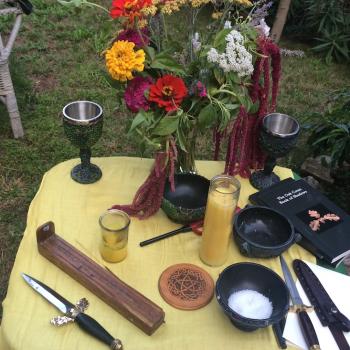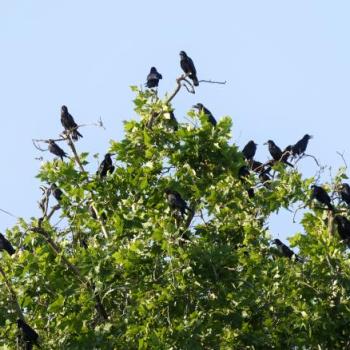The tradition that we today refer to as “Wicca” first went public in England during the early 1950’s. Originally an initiation-only tradition, by the 1970’s dozens of Wiccan traditions had popped up in Europe and North America. Today there are Wiccans on at least six of the seven continents, and despite “Wicca bashing” being rather fashionable over the last ten years, Wicca is still the largest Magickal Pagan Tradition under the umbrella.

The words wicca (masculine) and wicce (feminine) are where the modern word witch comes from. In other words Wicca is a kind of Witchcraft, but that does not mean all Witches are Wiccans. However in the first twenty years of the tradition that we today might broadly call Wicca, most practitioners self-identified specifically as Witches. Early Wiccan-Witchcraft texts had titles like Witchcraft Today, The Meaning of Witchcraft, and Witchcraft: The Sixth Sense. The word Wicca was not commonly used to describe Wiccan-Witchcraft until the 1980’s, though it was putting in appearances as early as the mid 1960’s.
Just how to define Wicca is a vexing task. Because of its origins as an initiate-only tradition there are many people who still define it that way. Longtime readers of this blog know that I believe language is a living thing and that definitions cannot be controlled by gatekeepers, but just what the word Wicca means will vary in certain contexts. Certainly to be an Alexandrian Wiccan-Witch one must be an initiate, but there’s nothing stopping anyone from being a Wiccan. So I believe in a broad definition of Wicca, one that’s primarily defined by its ritual structure.
Most people who practice Wicca utilize a similar ritual style, one that generally consists of four elemental powers, a circle, and the invocation of a higher power such as a goddess or natural force. In addition most Wiccans celebrate a “Wheel of the Year” consisting of eight sabbats of varying importance. The names and dates of those sabbats are not uniform, but are all generally recognizable.
There are also many groups today who prefer not to use the word Wicca or Wiccan and primarily self-identify as Witches, and those traditions often use the word Witchcraft to describe themselves too. Some of those groups I’m going to include in this article because their practices could generally be described as Wiccan, even though they don’t primarily self-identify that way. Because Wicca lacks any central organization and/or shared religious texts defining it can be a real challenge.
There are probably hundreds of different Wiccan (or Wiccan-style) traditions in the world today. However most of these can be broken down into a few categories because they share many similarities with each other. What follows is my breakdown of the many paths found within Modern Wiccan-Witchcraft.
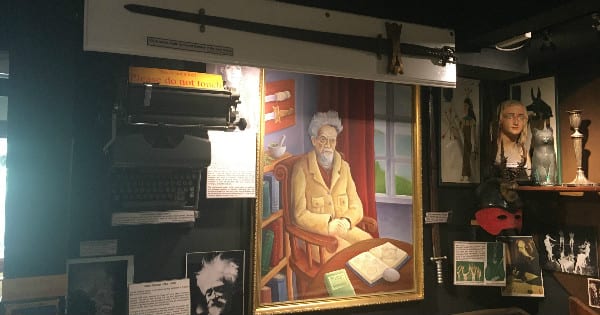
British Traditional Witchcraft (or Wicca)
BTW is the abbreviation generally given to the earliest forms of Wiccan Witchcraft and their offshoots. All of the traditions that we might call BTW require initiations and generally have an oath-bound Book of Shadows. Most BTW covens and traditions can trace their history back to a specific founder, generally one who has had some instruction in the Gardnerian or Alexandrian Traditions. The Gardnerian Tradition is most likely the oldest Wiccan-Witchcraft tradition and was started by Gerald Gardner in the late 1940’s/early 1950’s. Gardner was allegedly initiated into a practicing Witch-Coven in the New Forest area of England in 1939.
The Alexandrian Tradition is named after Alex Sanders, who with his then wife Maxine Sanders, began the tradition in the mid to late 1960’s. Alex Sanders most likely had some sort of training and/or interaction with Gardnerians before starting the tradition that bares his name. Certain traditions also contain “lines” which indicate certain origin points. In the Gardnerian Tradition the most famous lines are the Long Island and Kentucky lines. Lines generally respect each other and share information, though sometimes the establishment of a line can result in a schism within the tradition.
Beginning in the early 1970’s many people initiated into the Alexandrian and Gardnerian traditions began starting new traditions, using their previous training as a starting point. Traditions such as Blue Star Wicca and AlGard are examples of this. How long does a new tradition have to be around to be considered legitimate? I have no idea. In my estimation as long as people are getting something out of what they are doing and people are being honest about their origins it doesn’t matter.
Legitimate covens can always trace their lineage back to a specific person or source such as Alex Sanders or another founder. In the age of social media checking up on the bonafides of a coven that claims to be BTW is easier than ever. There are groups dedicated to specific traditions, and anyone who legitimately practices a tradition doesn’t mind being checked up on.
I’m a firm believe that there’s another subset of British Traditional Witchcraft, what I’m going to refer to as BTW Adjacent. These are groups that use the source materials written by BTW Practitioners (such as Janet and Stewart Farrar’s The Witches Bible), which are in turn based on BTW Books of Shadows. BTW Adjacent groups that adopt initiations and elevations might be indistinguishable from BTW groups, with the exception of a founder who wasn’t initiated into an established tradition. If someone is looking to practice Wicca in something approaching the style of Gardners or Sanders and there are not Gardnerian or Alexandrian covens around, BTW Adjacent is an excellent way to try and approximate those practices.

Initiatory Wiccan Traditions
Since the 1960’s people have been using various Witchcraft materials to start their own Wiccan traditions. These groups can generally be traced to a founder or two, but have no connection to a previously established tradition (outside of books and influences). These are perfectly fine and legitimate forms of Wiccan-Witchcraft, and many have been around nearly as long as Gardnerian Wicca. Example of this include the Horsa tradition started by Sybil Leek, and the New England Covens of Traditionalist Witches founded by Lady Gwen Thompson.
Wiccan Traditions With Ancient Pagan Roots
There are many Wiccan traditions that actively look to specific pantheons and mythologies for inspiration. One of the first examples of this is Raymond Buckland’s Seax-Wica which was inspired by Anglo-Saxon paganisms. In such groups the ritual structure is obviously Wiccan, but the deities utilized tend to be from specific pantheons.
People have started Wiccan traditions focused on Hellenic deities, Norse gods, and probably most often Celtic figures. Some covens focused on specific pantheons are related to BTW traditions, while others have more recent origins. Any group like this that limits membership on the basis of genetics and race should be run away from as quickly as possible. Information about racist groups (because that’s what’s going on in such instances) should be shared on social media so people can be made aware and avoid such groups.
Dianic Witchcraft/Wicca & Same Sex Traditions
Dianic Witchcraft resembles many forms of Wicca, but is almost exclusively Goddess centered. In addition, many Dianic groups are limited only to women. There are several different Dianic groups, but the most well known form of Dianic Witchcraft was founded by Z Budapest in the 1970’s.
Often confused with Dianic groups are Same Sex Covens and Circles. Sometimes these groups are related to BTW Traditions, and sometimes not, and a female-only coven is not necessarily Dianic in practice, its members may simply feel more comfortable practicing Wicca without the presence of men. There have been active same sex groups since at least the 1970’s limited to both men and women.
How open and inclusive are Same Sex groups today? There are many who comfortably and happily admit anyone who self-identifies with the gender of the coven or group. In fact the overwhelming majority of Wiccan traditions have space for everyone on the gender spectrum. However, there are some groups less open, and it’s often in a seeker’s best interest to receive a clear and unambiguous accounting of just how inclusive a group is.
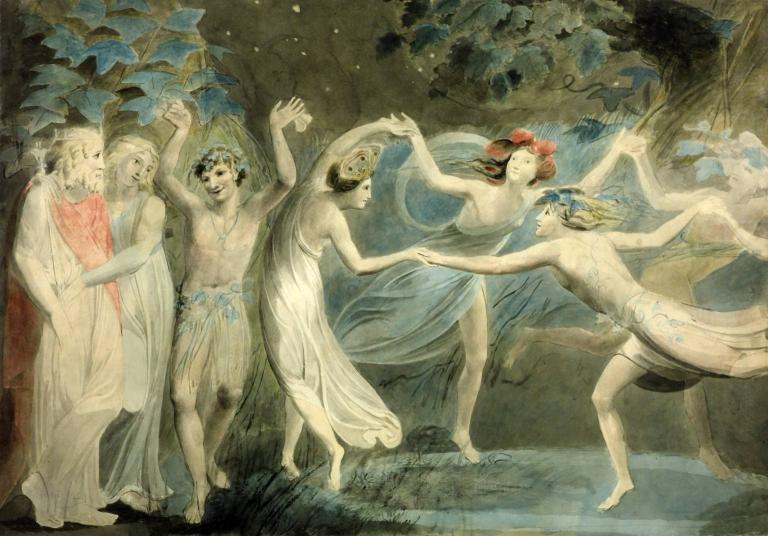
The Reclaiming Tradition of Witchcraft
Individuals in the Reclaiming Tradition generally identify as Witches, but since the tradition meets my requirements when it comes to ritual I’m including them here. The Reclaiming Tradition was started in 1979/1980 by Starhawk and Diane Baker in California’s San Francisco Bay Area. Unlike many other Witchcraft traditions at the time Reclaiming was openly political, advocating for women’s rights, nuclear disarmament, and a multitude of ecological issues.
While many of the traditions outlined in this article are very “by the book,” Reclaiming has always utilized a very ecstatic form of ritual. Many of my favorite Witches are part of the Reclaiming Tradition or have roots within it. Though the Reclaiming Tradition offers initiation, it is not required to practice the tradition.
Eclectic Wicca
The vast majority of Wiccan practitioners today are eclectic, drawing from a wide range of sources. Eclectics utilize whatever is at hand to further their practice, most notably books, but today those books could be supplemented with blog posts, videos, and other sources of information. Eclectic Wiccans can be solitary practitioners or create their own coven (which overtime can turn into their own traditions). Eclectic is also a good word for describing public rituals not performed in the style of any particular tradition or group.
Thirty years ago “eclectic” was a dirty word and it still is some circles, but that type of thinking is elitist and ignorant. Some of the most intelligent Witches I know have never formally practiced a tradition, and with the vast amount of books and information out there today, the need for a “teacher” is much less than what it once was. I’ll also add that most Wiccan-Witches have at least a small eclectic side to their practice. “Eclecticism” is also simply what we all do when we are doing our own personal thing.
Many of the categories listed here are capable of overlapping. It’s possible to have a Dianic-inspired group with several eclectic elements. Traditions such as Reclaiming encourage innovation and exploration, leading down pathways many would consider “eclectic.” Many BTW Covens contain “outer courts,” groups that allow non-initiates to participate in ritual. By its very nature an outer court group could be considered eclectic.
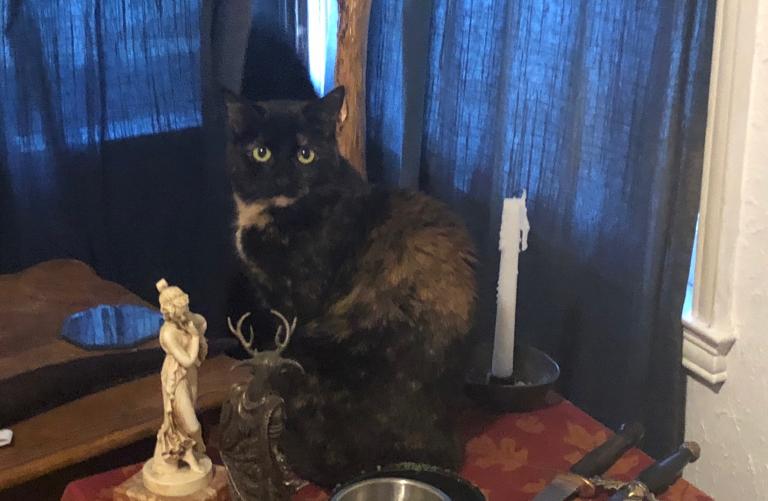
A great majority of Witches area also involved in several groups and traditions. I myself am a member of a BTW coven, but also actively participate in a BTW-Adjacent eclectic group. Some of the members of that latter coven are also a part of a local same-sex group. My BTW coven has members who are a part of other organized traditions. Many Wiccans (and Wiccan-adjacent) folks like to participate in several different cauldrons.
What Matters Most
What has made Wicca so popular over the last fifty years is how adaptable it is. It can be practiced in a variety of ways, and formulated to fit individual needs. Wicca has grown quite rapidly over the last seventy yeas, and that growth seems likely to continue in some form.
Whether a group is part of a long-standing tradition or formed last week is really inconsequential. When looking at Wiccan covens what’s most important is finding a place where you fit in. There’s power in tradition and lineage, but there are also people who actively recoil at such things. Some people like more ecstatic ritual while others prefer something that sounds like it came out of a 16th Century Grimoire.
While lists like this make Wicca look neat and tidy, we are in the middle of some very rapid realignment. Many people who would have been considered Wiccan twenty years ago (and most likely would have self-identified that way) seem to be actively distancing themselves from the word today. Because of this, just what Wicca is and what defines a tradition in it will vary from person to person and tradition to tradition.










